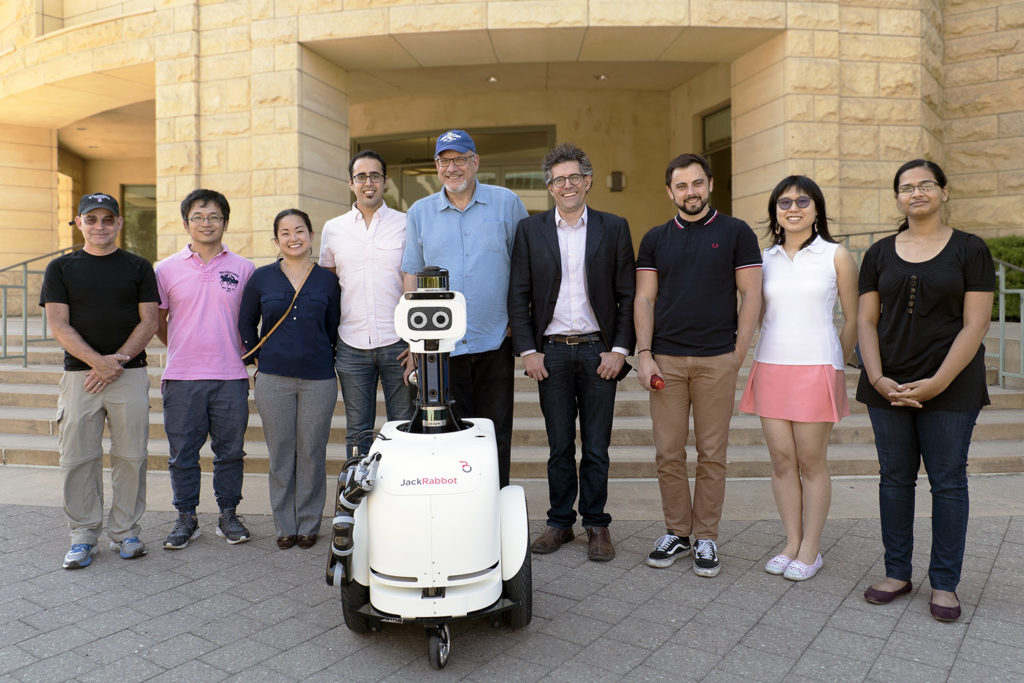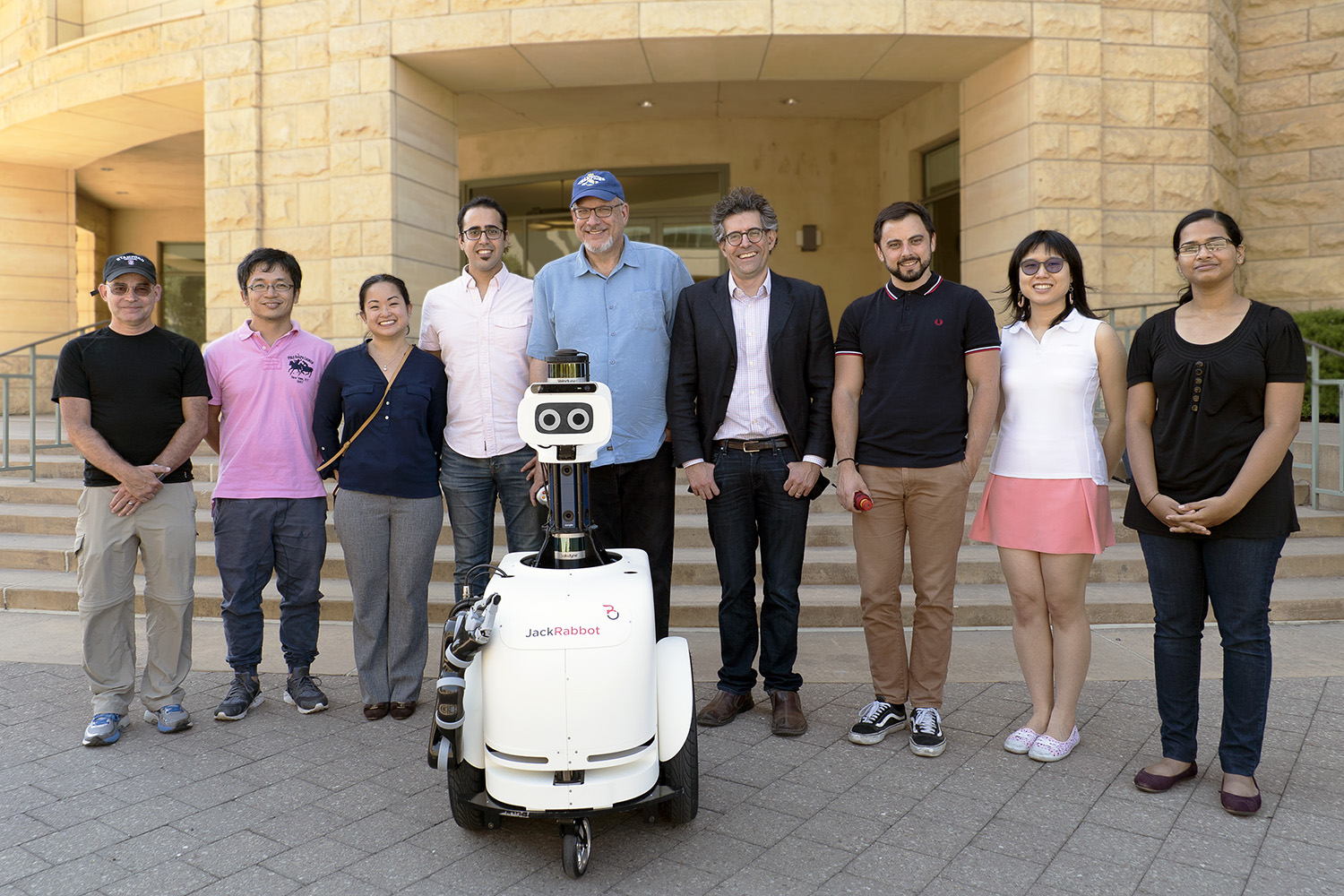
Autonomous vehicles and robots have to know how to get from A to B without hitting obstacles or pedestrians — but how can they do so politely and without disturbing nearby humans? That’s what Stanford’s Jackrabbot project aims to learn, and now a redesigned robot will be cruising campus learning the subtleties of humans negotiating one another’s personal space.
“There are many behaviors that we humans subconsciously follow – when I’m walking through crowds, I maintain personal distance or, if I’m talking with you, someone wouldn’t go between us and interrupt,” said grad student Ashwini Pokle in a Stanford News release. “We’re working on these deep learning algorithms so that the robot can adapt these behaviors and be more polite to people.”
Of course there are practical applications pertaining to last mile problems and robotic delivery as well. What do you do if someone stops in front of you? What if there’s a group running up behind? Experience is the best teacher, as usual.
The first robot was put to work in 2016, and has been hard at work building a model of how humans (well, mostly undergrads) walk around safely, avoiding one another while taking efficient paths, and signal what they’re …read more
Source:: TechCrunch Gadgets

 Previous post
Previous post